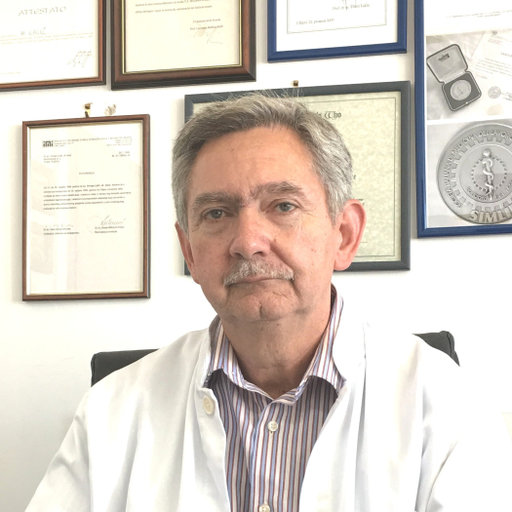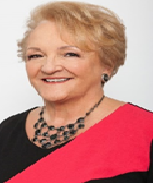Day 1 :
Keynote Forum
Hrvoje Lalic
Health Centre Rijeka and Medical Faculty University Rijeka, Croatia
Keynote: The key role of occupational medicine specialist as an expert witness in national and international law suites

Biography:
Abstract:
Keynote Forum
Anna Tompa
Semmelweis University Department of Public Health, Hungary
Keynote: Cytogenetic and immunotoxic effects caused by occupational formaldehyde exposure among pathologists and their assistances

Biography:
Abstract:
Keynote Forum
Hazem Gallagher-Alagha
University of Glasgow, Scotland
Keynote: Are the outcomes of health surveillance predictive of development of new cases of hand arm vibration syndrome?

Biography:
Abstract:
Keynote Forum
Victor Songmene
University of Quebec, Montreal, Canada
Keynote: Progress on fine and ultrafine particles emision, dispersion and control during machining: Cases of metals, composite, woods and granite

Biography:
Abstract:
Keynote Forum
Rosa Maria Orriols
Bellvitge university hospital, Spain
Keynote: Evaluation methodology of medical safety device

Biography:
Abstract:
Keynote Forum
Marian Gugushvili
David Tvildiani Medical University, Gerogia
Keynote: Risk factors of functional hyperandrogenesis: Case control study
- Occupational Health and Risk Management | Occupational Public Health | Occupational Health and Industrial Hygiene | Occupational Health and Mental Health | Occupational Health Psychology and Work Environment
Location: Sylt 1-2
Session Introduction
Marian Gugushvili
David Tvildiani Medical University, Gerogia
Title: Risk factors of functional hyperandrogenesis: Case control study
Biography:
Abstract:
Shayesteh Jahanfar
Central Michigan University, USA
Title: Age of menarche heritability and birth weight
Biography:
Abstract:
Masahiro Onuma
President of Trisguide ltd, Japan
Title: Electronic water can reduce oxidative stress in PCOS patients for 3 weeks drinking
Biography:
Abstract:
Shayesteh Jahanfar
Central Michigan University, USA
Title: Age of menarche, heritability and birth weight
Biography:
Abstract:
Maria do Carmo Baracho de Alencar
Federal University of Sao Paulo, Brazil
Title: The suffering of nutrition attendants of a public hospital affected by RSI/WRMSD
Biography:
Abstract:
Biography:
Abstract:
Emmanouella Chatzidaki
Institute of Molecular Biotechnology, Vienna, Austria
Title: Ovulation suppression prevents the increase in egg aneuploidy with maternal age
Biography:
Dr. Emmanouella Chatzidaki has completed his PhD at the age of 26 years from the Univeristy of Cambridge, UK and postdoctoral studies from Karolinska Isntitute, Sweden
Abstract:
The frequency of egg aneuploidy and trisomic pregnancies increases with maternal age. Since multiple causes contribute to egg aneuploidy, it is likely challenging to prevent the “maternal age effect” using a single approach. To test our hypothesis that ovulations contribute to oocyte ageing and chromosome missegregation, we used genetics, hormonal contraception and successive pregnancies to reduce ovulations. We observed that ovulation reduction is sufficient to prevent egg aneuploidy and age associated errors during meiosis I division of the oocyte, in aged mice. By interrupting ovulations with successive pregnancies, we discovered that eggs from aged mated females display lower aneuploidy and reduced precociously separated sister centromeres compared to those from aged virgin females. When putting mice on hormonal contraception we find a near 2 fold reduction in aneuploidy incidence. To reduce ovulations further, we generated Gpr54 knockout mice, which remain in a pre-pubescent state. Remarkably, aneuploidy is reduced 3-fold in eggs from Gpr54-/- versus Gpr54+/+ aged females. These data suggest protection is due to reduced ovulations. We further observed that ovulations contribute to loss of Rec8-cohesin, which is essential for sister chromatid cohesion in meiosis. Single-nucleus Hi-C revealed a deterioration of 3D chromatin organization that depends on ovulation frequency and Rec8, which restricts loops extrusion. We conclude that ovulation suppression leads to retention of Rec8, which maintains chromatin structure and promotes chromosome segregation and production of euploid eggs. Our work implies that hormonal contraception can reduce the risk of Down’s syndrome pregnancies at advanced maternal age.
Marlee Madora
Montefiore Medical Center, USA
Title: Peripartum ethical considerations in a pregnant psychotic patient
Biography:
Marlee Madora completed her medical degree at Sidney Kimmel Medical College of Thomas Jefferson University. She is a second year resident in psychiatry at Montefiore Medical Center and is particularly interested in womens mental health. Rachel Noone completed her medical degree at Penn State University and is a graduate of Montefiore Medical Center’s Psychiatry Residency. She specializes in the treatment of patients with serious mental illness and works at the Inpatient Psychiatry Unit at Montefiore Wakefield Campus.
Abstract:
CM is a 41yo G2P1 domiciled in supportive housing with supraventricular tachycardia, chlamydia and chronic severe schizoaffective disorder who presented to the hospital during her second trimester with worsening psychosis. She expressed the delusion that the father of her child was a celebrity who was not giving her money for food. She was involuntarily hospitalized for decompensated psychosis and refused antipsychotics due to paranoia. She was taken to court for treatment over objection and was court ordered for treatment with olanzapine. Despite receiving a maximum daily dose of olanzapine, the patient continued to be paranoid, delusional, isolative and unable to care for herself throughout her entire pregnancy. She had a C-section at term, and was subsequently monitored on the cardiology unit for tachycardia. After medical stabilization, she was transferred back to psychiatry for management of persistent psychosis. Child Protective Services (CPS) was called and the baby was remanded due to the patient’s severe psychosis with inability to care for herself or the child. The patient then requested to visit her child and breastfeed while her baby was in the neonatal intensive care unit for respiratory issues. Using a relational ethics framework, the multidisciplinary team decided that the risk of disrupting the mother’s psychiatric treatment, exposing her to psychological harm due to increasing attachment before remanding the child, and risk to child due to potential unpredictable dangerous behavior driven by psychosis outweighed the benefits of visitation and breastfeeding in this challenging clinical case.

